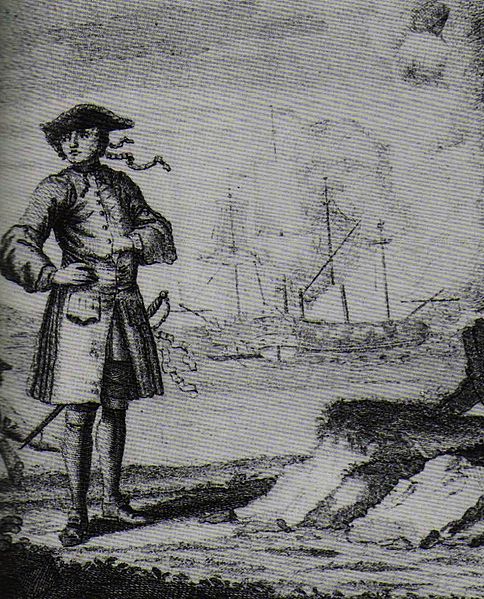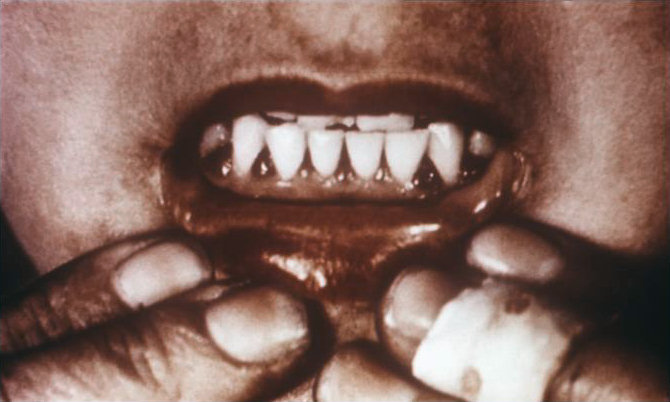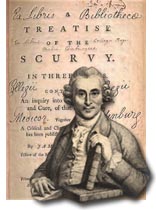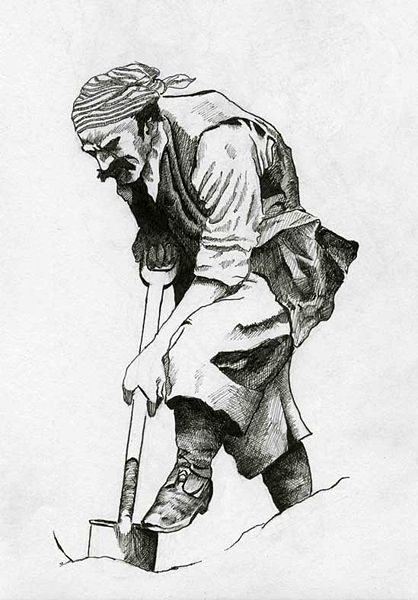Going to Sea
Today, we go to sea. The University of Houston's College of Engineering presents this series about the machines that make our civilization run, and the people whose ingenuity created them.
"Avast, ye scurvy scum!" Pirate movies and theme parks always call old time sailors "scurvy". That's because old-time sailors were plagued by that disease. But one man's fight against scurvy gave us tools we now use to fight all diseases.
Scurvy was a huge problem. It made sailors' gums turn black and their teeth fall out. It often killed them. Magellan once lost half his crew to scurvy. We know now that scurvy is caused by the lack of vitamin C, but back then they didn't know about vitamins at all. The Latin name of scurvy was scorbutus. It led to the chemical name for vitamin C, a-scorbic acid.

An engraving depicting the pirate Edward England with, in the background, the fight of the Fancy (left) and the Cassandra (Wikimedia)

An example of scorbutic gums (Centers for Disease Control and Prevention/Wikipedia)
It took a hundred years after we'd picked up on the first clues, to connect scurvy and fruits that contain vitamin C. Sailors lived mainly on dried meat and grains which could be stored without refrigeration. Many people believed scurvy was caused because preserved foods became poisonous.
Nor did people know that, because most animals make their own vitamin C, fresh meat prevents scurvy. No oranges or lemons in the Arctic, but whale skin is rich in vitamin C. The fact that Vitamin C is unstable led to more confusion. So people ignored the signs that fruits cure scurvy.
Finally, a British naval surgeon, James Lind, brought a major advance to medical science as well as scurvy prevention. Vitamins had not yet been discovered, and like others, Lind thought scurvy was caused by "putrefaction" of food in the body — to be treated with acids. Unlike others, he actually tested his ideas in a reliable way. He created the modern clinical trial.

James Lind (Wikipedia)
Lind ran a famous test of six different treatments in 1747. He used each on two sailors who otherwise ate the same food. He tested vinegar, diluted sulfuric acid, and other treatments including citrus fruit for two sailors. They ran out of lemons and oranges six days later. But their health was already much better.
So Lind promoted the idea of citrus to prevent scurvy. But not very well. He lumped it in with other ways to attack what he thought was the root cause — poorly-digested, putrefying food in the body. He also favored a boiled-down concentrated fruit juice called "rob". And boiling destroyed much of the vitamin C.
The result? It took a long time before citrus for scurvy was widely adopted. But the British Navy began adding fresh lime juice to their sailors' ration of rum. British sailors became healthy "Limeys". And "Limey" gained such currency that we now use that word for all Brits.
Lind gets and deserves much of the credit for our modern approach to scurvy prevention. Equally important: We also now follow Lind's ideas about testing medicines. Our thousands upon thousands of controlled clinical trials reflect Lind's rational means for attacking most diseases — and not just scurvy.
And those toothless "Scurvy Scum"? Well, now they're just for pirate movies.

An image of a pirate digging (Howard Pyle/Wikipedia)
I'm Richard Willson, at the University of Houston, where we're interested in the way inventive minds work.
(Theme music)
Notes and references:
BBC Biography of James Lind http://www.bbc.co.uk/history/historic_figures/lind_james.shtml
James Lind and the Cure of Scurvy: An Experimental Approach (Historical context of Lind's experiments, Lind's description of the trial, and analysis of the Vitamin C content of Lind's tested remedies) http://www.ncbi.nlm.nih.gov/pmc/articles/PMC1081662/pdf/medhist00113-0029.pdf
Arun Bhatt, "Evolution of Clinical Research: A History Before and Beyond James Lind," Perspect Clin Res. 2010 Jan-Mar; 1(1): 6–10. PMCID: PMC3149409, available on line at: http://www.ncbi.nlm.nih.gov/pmc/articles/PMC3149409/ (History of clinical trials, with Lind in context)
This episode first aired on June 11, 2014.